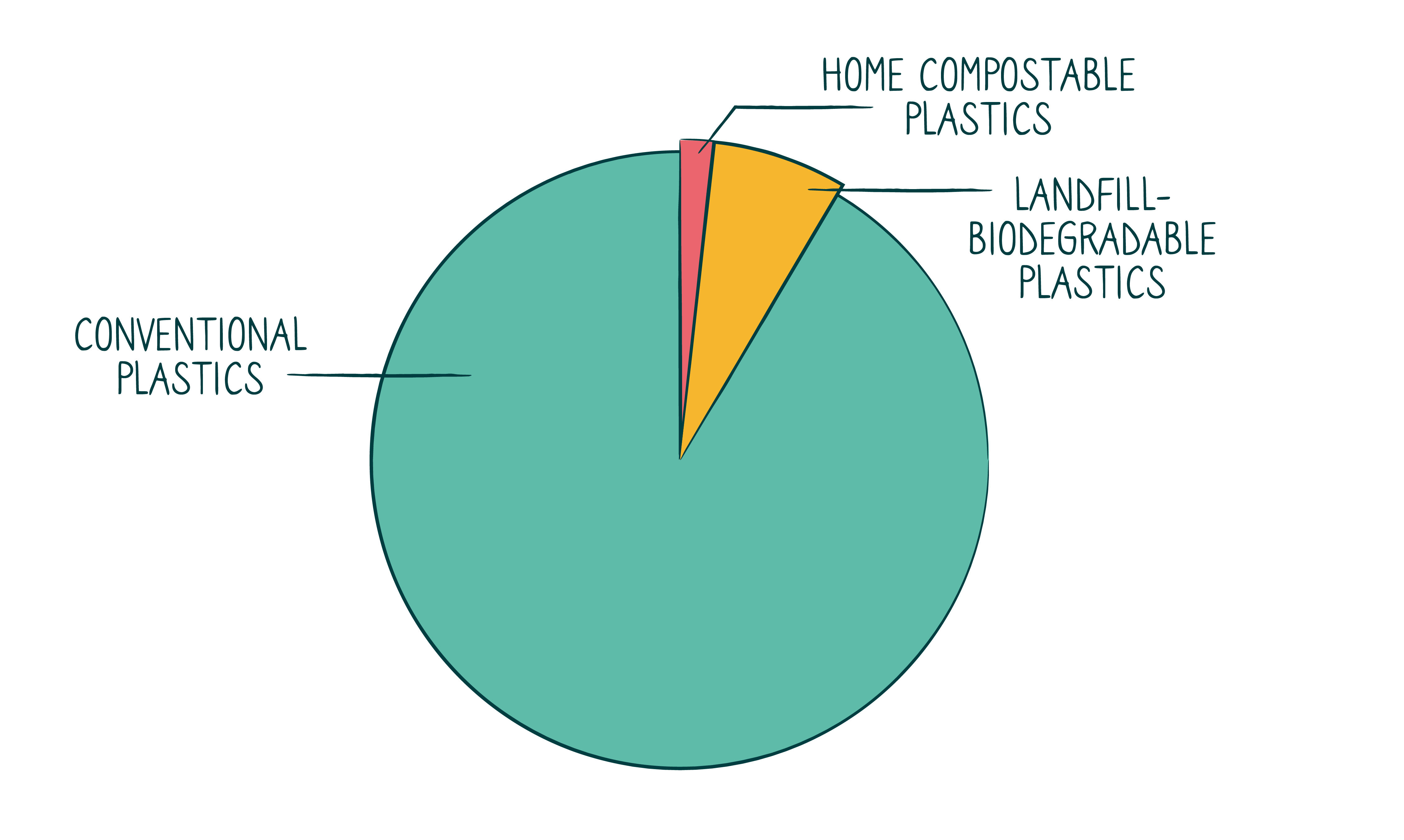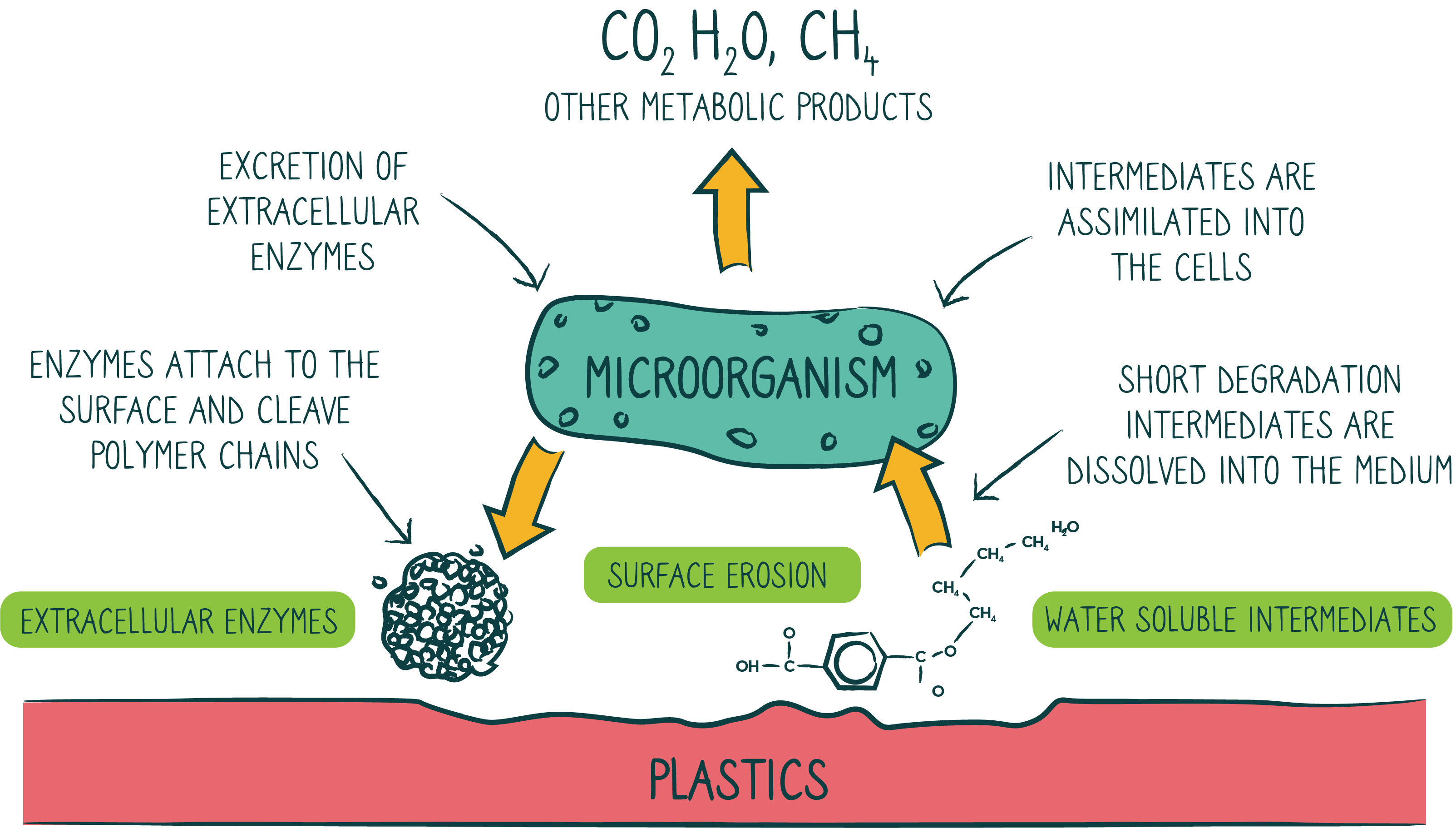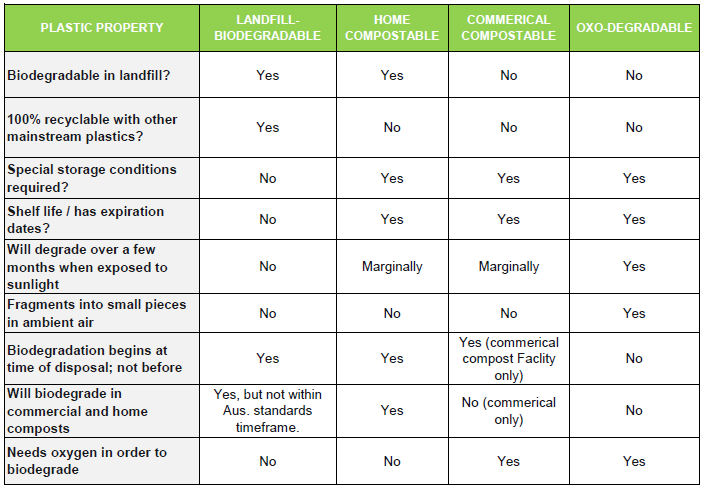Landfill-Biodegradable Plastic
When it comes to biodegradable plastics, the 2 main choices are:
- Landfill-biodegradable (our choice)
- Compostable (home or commercial)
How long it takes to biodegrade
Biogone understands
- Single-use plastics are not going anywhere any time in the future
- Approximately 85% of plastic waste in Australia that is disposed of ends up in landfills
- We’re years off having a complete and functional circular economy, read why here
- Some consumers are time poor and often choose the most convenient option
- All commercial compostable products need to be deposited in commercial composts (which is a waste stream that is not available in most local councils across the country), hence many ‘compostable’ items end up in a landfill
- Commercial compostable plastics need very specific environments to biodegrade
- Many people don’t have a home compost for them to dispose of their home compostable plastic items
Why landfill-biodegradable plastic is the logical choice
Landfill-biodegradable plastics:
- Are affordable and a practical solution
- Are convenient and designed for ‘time poor’ consumers (who are mindful of their impact on the environment)
- Can be either reused, recycled, or if sent to landfill, they will biodegrade 90% faster than conventional plastics (conventional plastics can take hundreds of years to biodegrade)
- The methane produced from accelerated landfill-biodegradable plastics can be captured within the time frame the landfill is actively managed, rather than being released into the atmosphere over hundreds of years after the landfill has closed and stopped being managed. This captured methane can be used for fuel and energy production (waste to energy)
- Biodegradation of plastic is achieved by enabling microorganisms to metabolize (i.e. break down) the molecular structure of the plastic, which produces a humus-like material (organic matter) which is a natural plant fertiliser and a biogas
- Do not fragment into microplastics during biodegradation
Landfill-biodegradable technology – how does it work?
Landfill-biodegradable plastic is made by combining traditional plastic with an organic additive. The biodegradation only begins when the plastic is exposed to a microbe-rich environment, such as a landfill.
The additive attracts microbes to the plastic and they start to digest it. As they do this, the enzymes (the microbes secrete) break the carbon bonds in the plastic molecule allowing the microbes to digest them for their energy. As more enzymes are secreted, more atoms are removed from the plastic molecule (called depolymerisation) which the microbes can digest. As this process continues, the plastic molecule is broken down and digested away.
The biodegradability of plastic can be confirmed by comparing biodegradation results from an independent laboratory using either ASTM D5511, ASTM D5526 or Bio-Methane Potential (BMP) tests.
The additive and the landfill-biodegradable process
Watch the video
FAQs
- An organic food source.
- Approved by USFDA for food contact.
- Mixed in a small ratio to not affect the parent plastic material properties.
- Landfill conditions are different across the country. Some are in cooler or warmer conditions. If the plastic is put into a dry landfill it will degrade slower than a more actively managed water moistened landfill.
- The difference in plastic thickness. Our landfill-biodegradable plastics vary in thickness. The thicker the plastic section, the longer it will take to biodegrade. Membrane films are expected to biodegrade quickly. Thicker sections may take several years.
Compare the plastic technologies
| Plastic Property | Landfill-Biodegradable | Home Compostable | Compostable | Oxo-Degradable |
|---|---|---|---|---|
| Biodegradable in landfills? | Yes | Yes | No | No |
| Recyclable with other mainstream plastics? | Yes | No | No | No |
| Special storage conditions required? | No | Yes | Yes | Yes |
| Shelf life / has expiration dates? | No | Yes | Yes | Yes |
| Will degrade over a few months when exposed to sunlight | No | Marginally | Marginally | Yes |
| Fragments into small pieces in ambient air | No | No | No | Yes |
| Biodegradation begins at time of disposal; not before | Yes | Yes | Yes, in Commercial compost facility only |
No |
| Will biodegrade in commercial and home composts | No | Yes | No, Commercial compost facility only |
No |
| Needs oxygen in order to biodegrade | No | No | Yes | Yes |



